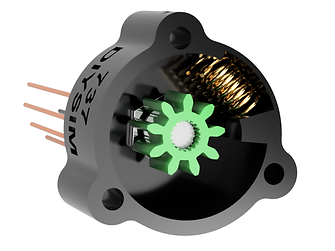
C172 Start Switch
This page is split into three main sections:
Parts Guide
Print Guide
Build Guide
The ultimate printer I can recommend is the Bambu Labs X1 carbon with AMS or P1P if you have deep pockets. ($1200). It's a massive leap forward in 3D printing, with excellent quality and impressive speeds. It's pretty much press print and go as the software and hardware do the calibration before each print.

General Information:

Build Guide

Click on image for more details
STEP:
1
Insert the supplied key into the barrel

Click on image for more details
STEP:
2
Turn the barrel around so that the rear can be easily seen.

Click on image for more details
STEP:
3
Remove the attachment screw, outer lock nut and the sprung lock tab (brass colouredin photo) holding the inner barrel into the out barrel

Click on image for more details
STEP:
4
Ensure the key remains in the inner barrel at all times and pull the inner barrel out of the outer barrel.

Click on image for more details
STEP:
5
Identify the rotation lock on the inner barrel (highlighted in red). This is solid metal and part of the inner barrel.

Click on image for more details
STEP:
6
Gently file away the rotation lock so the barrel is smooth all the way around as shown.

Click on image for more details
STEP:
7
Place the inner barrel and key backinto the outer barrel and ensure the inner barrel rotates freely 360 degrees.

Click on image for more details
STEP:
8
Place the lock tab back on the end of the inner barrel.

Click on image for more details
STEP:
9
Insert the barrel assembly into the front case

Click on image for more details
STEP:
10
Turn the assembly around and place the lock nut in the out barrel and secure it.

Click on image for more details
STEP:
11
Place the barrel adapter onto the inner barrel spigot. Ensure the Key is in the vertical position, aligned with the upper arrow on the front case. Also ensure the spigot of the adapter face directly up towards the arrow on the front case.

Click on image for more details
STEP:
12
Secure the assemblies with the supplied screw.

Click on image for more details
STEP:
13
Secure 6 24AWG wires to the centre ground pin and 5 further wires to pins 1-5. I like to use heatshrink to help protect the soldered joints.

Click on image for more details
STEP:
14
Insert qty 2, 7.1mm OD comprerssion springs into the rear housing. These springs are 15mm long with a wire diamter of 0.8mm. You mave have to force the bases of the springs into the hosuing recepticles using an small instrument screwdriver. This should hold them securley.

Click on image for more details
STEP:
15
Insert the 12 position roatry switch into the rear casing from behind. Ensure the locating tang sits correctly into its orrifce on the rear face of the housing.

Click on image for more details
STEP:
16
Turn the unit around and secure the rotary switch with the supplied nut.

Click on image for more details
STEP:
17
Place the spur gear onto the shaft of the rotary switch

Click on image for more details
STEP:
18
NOTE: Take the rear section with the rotary switch, while looking at the spurgear, rotate the roatry switch fully anticlockwise. Then rotate, 2 clicks clockwise. Ensure the key assembly is vertical on the front assembly. Join the two sections together.

Click on image for more details
STEP:
19
Secure the sections together with Qty 3, M4 x 30mm Screws.

Click on image for more details
STEP:
20
Place the unit into the panel and secure with Qty 2, M4 x 14mm screws. Plese not that the upper orrifce is not used to secure the assembly.
